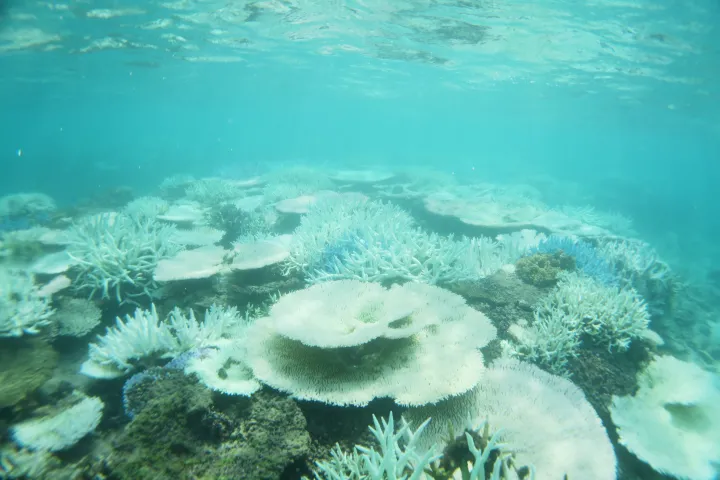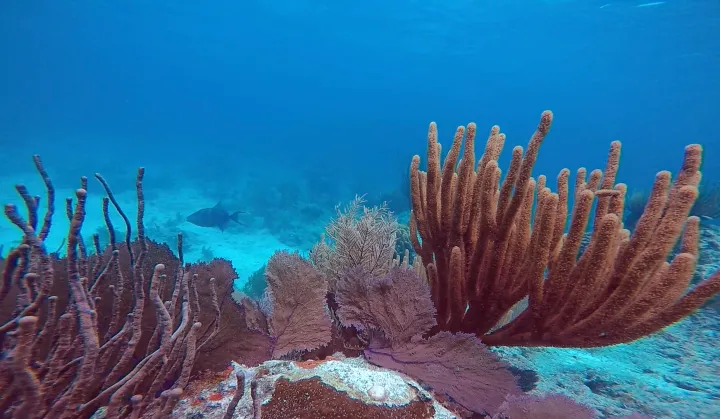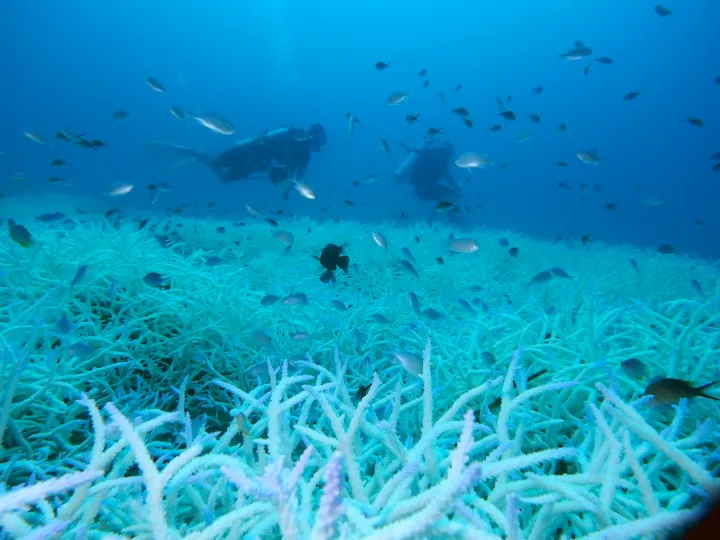Ancient Reefs Reveal Glimpse at Future Oceans

Envision a coral reef and a rainbow of colors come to mind. Brilliantly colored schools of fish, anemones with a flowing fringe of tentacles, and vibrant invertebrates of all shapes and sizes make their home among the corals. It is the corals that are the backbone of reefs. Their sturdy skeletons of branching arms and fronds supply the perfect habitat for the multitudes of ocean life to thrive. But all of that may be about to change.
“Corals are suffering mass bleachings all over the world. As in the past, it is likely that we will see the future extinction of reef builders,” said Andrea Quatrini, research zoologist and curator of corals at the Smithsonian. “Habitat loss would occur for thousands upon thousands of other animals that depend on corals for protection, shelter, sustenance, and livelihoods.”
A study by scientists from Harvey Mudd College, the American Museum of Natural History, and the Smithsonian’s National Museum of Natural History looked back over millions of years and found that the oceans temperature and acidity dictated which types of coral species thrived in the ocean. It turns out the determining factor had to do with the coral’s skeleton structure.
As a coral, there are two options when building your skeleton. Some prefer a softer body built of proteins and sclerites—small mineral parts made of the mineral calcite. Others build denser, “stony” skeletons using the mineral aragonite. While both minerals are built using the same chemical building blocks (calcium carbonate), their different crystal structures cause them to form in and respond to the ocean environment in different ways.
Today, ocean reefs are predominantly filled with corals built of aragonite. The ocean’s chemistry and temperature are currently most conducive to building aragonite. But like oceans of the past, that can all change, and with it the types of corals that thrive. Quattrini was one of the scientists curious about looking to the past to determine what we can expect in future reefs, and for her the answer remained hidden within coral DNA.
Extracting secrets from coral DNA is more difficult than doing the same for butterflies or fish. Most researchers have conventionally used DNA barcodes to distinguish evolutionary relationships between species. In this method, a specific gene, also called a barcode, is compared from one species to the next. But try doing the same with anthozoans, the class that includes corals, and distinguishing one species from the next using these traditional barcodes is a bit of a nightmare—the genes are too much alike.
Figuring out the anthozoan tree of life needed more information and significantly more computing power. Quattrini and others decided to expand the range of genes, and ended up comparing close to 2,000 genes in order to figure out the coral tree of life! Even then, not all the corals wanted to cooperate. Several failed attempts to sequence the black corals’ genes revealed that those corals produced a mysterious compound that blocked a DNA copying process used in the lab—an easy fix, but another example of how corals are tricky study subjects.
Making the leap from understanding the genetics of species to knowing when they arose in geologic time can seem like a stretch. How can DNA of today’s corals inform us about the past? The trick lies in a few select fossils. Even corals alive today have fossilized individuals or close relatives from when their species first evolved. Scientists are able to use the dates of those fossils to indicate when an evolutionary split from another species occurred, and then determine the rate of genetic mutations since that split. Quattrini and team then used this rate to figure when other groups arose, even though they didn’t have associated fossils.
And what they found was revealing. By knowing the age of specific lineages, the scientists could determine at what point in time they evolved. Oceanic conditions of the past are known through previous studies, and Quattrini and others took the ages of anthozoans and paired them with the understood conditions at that time. Of particular interest was at times when the ocean switched from a cool ocean to a warm and acidic ocean, like in the early Jurassic. What they found was that when there was an extinction of reef builders due to warm and acidic conditions (a reef crisis), softer anemones and corals that built their skeletons from proteins or mineral calcite thrived.
“Our study showed that after these reef crises, we actually get an increased diversification of anthozoans in general," said Quattrini. "Particularly those that can do well under these climate conditions—ones that aren’t producing aragonite and aren’t making big reefs.”
This new study provides important insights into the future— as the climate changes and oceans become warmer and more acidic due to an increase in carbon dioxide, reef building corals may be unable to grow, and instead their soft-bodied relatives like anemones will thrive. When the reefs disappear, it is likely that so will the species that live there. It's a sobering takeaway, considering all the ocean organisms and humans that rely on reefs to survive.




